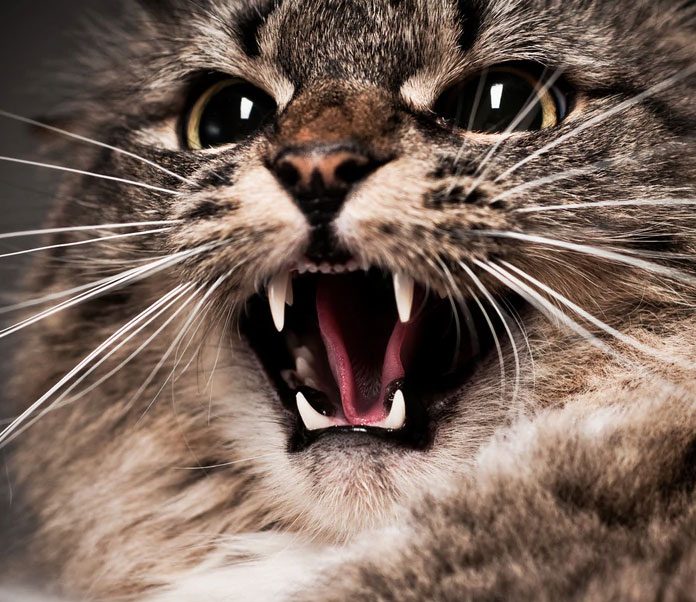Play aggression is defined as the stalking, chasing, pouncing, biting, and scratching behaviors, which normally occur when cats engage in play.
Problems occur when these behaviors are directed against instead of with people in the household.
 Another common cause for play aggression towards humans is when owners leave a single young cat alone for most of the day. Play aggression can also be triggered and reinforced by owners who insist on letting a cat “attack” their hands and feet.
Another common cause for play aggression towards humans is when owners leave a single young cat alone for most of the day. Play aggression can also be triggered and reinforced by owners who insist on letting a cat “attack” their hands and feet.
Owners must learn to recognize the postures exhibited by cats engaging in problematic, as opposed to acceptable, play aggression. The typical play aggression cat will demonstrate predatory type of behaviors.
The cat will stalk the owners and pounce on moving body parts such as hands and feet. Growling and hissing usually does not occur, however, the cat’s pupils will be widely dilated. Bites and scratches inflicted during a play aggression attack are usually inhibited and not severe.
All of the above types of aggression are normal for a cat. There are, however, a couple circumstances when there may be cause to worry.
If a cat hisses and growls while attacking, he is not playing. This type of behavior is intended to inflict pain. It is important to find out what may be causing this behavior. Reacting with physical punishment will only make the cat worse. Try talking quietly and calmly to him until he has settled.
Medical causes for aggression should be pursued only if a cat exhibits behavior that is unusual for the particular cat, or behavior accompanied by abnormal clinical signs. If a cat that previously loved to be petted suddenly starts biting when stroked, you should look for a possible source of pain.
Knowing what is and is not normal for a cat will help you avoid problems in the long run.
































